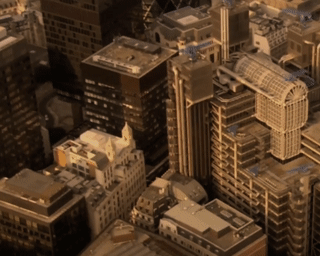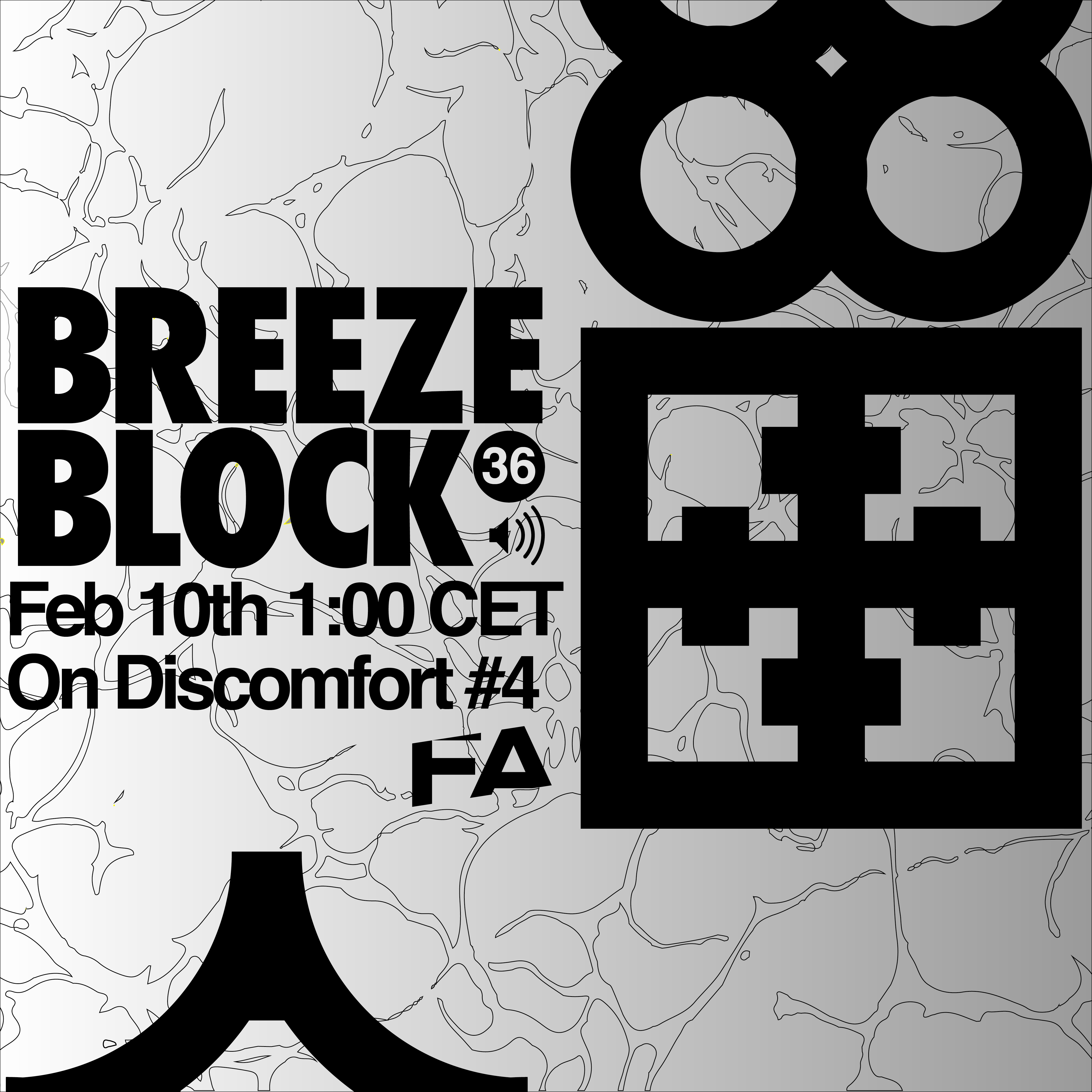Episode Transcript
Speaker 0 00:00:03 Welcome to failed architecture, breeze blocks, where our editors share their thoughts and works in progress, urgent matters, and current happenings in architecture and spatial politics. My name is Joshua McWhorter. This is the second installment of a conversation with my two fellow New York city-based editors, Michael Nicholas and Kevin Rogan about so-called traditional architecture or chat arc for short, where the first part of our discussion focused largely on a critique of the intellectual undercurrents of the trout arch movement. Here, we delve a bit more into how the tread impulse folds back onto the real world from historic preservation projects to former us president Donald Trump's infamous executive order mandating a classical design aesthetic for government buildings enjoy.
Speaker 1 00:00:44 So it's interesting like in the Trump executive order, like some of the stuff that they, I mean, again, it falls into this trap of being like this kind of nebulous undefinable, like kind of good design practice that is like these kind of just amalgamation of different, like kind of traditional beautiful architecture styles. And interestingly, like two of the examples that they show of like actually good architecture being built in federal buildings now it's like the Tuscaloosa courthouse and the corporate Christie federal courthouse, which I mean are purely just pastiche. Like they're not, it falls. It's totally like what Kevin was talking about, where, um, you're saying that it's just a facade change, like to some of the other buildings, because like modern courthouses are pretty standard. So like the facade of the building really doesn't matter to the actual function of it. Yeah.
Speaker 2 00:01:32 I mentioned earlier also the notion of utility as sort of one of the big callings of an architect to, to aid in enabling the utility of any given structure, but just not just about the arrangement of rooms, but also like to communicate various, some textual and cultural things, whatever. Um, and I mean, all in all the courthouse designed today is going to communicate is like, uh, proper crowd control on how to get everybody through a metal detector. Like it's not about like the sanctity of the, the law as a function of the nation or anything like that. It's about getting you into your, your discreet little courtroom and getting you through a weapons check and shit like that. And that's it like that is the whole utility and like the, you know, so I think maybe that is also part of being about traveling. The trans is like, I don't think an architect today knows how to communicate something like that in accordance with like a sort of a universal and maybe the problem is, is that universals are mostly gone, um, or destroyed by the cultural Marxism and post-modernism and stuff like that.
Speaker 2 00:02:45 Um, but you know, even if they were to exist, it's well out of architecture's hands, um, it's long gone, it's been gone for centuries. And I think part of what the executive order is about is kind of a recognition on the part of, of the federal government. So in the executive order, they referenced the guiding principles for executive architecture from in the 20th century, which basically say like every, and they mentioned as a big bugbear. So it's like, you know, they fucked it all up. Like they made the architects sort of like the ones that were kind of dictating the show, um, and, you know, charge the government to go for a contemporary, uh, architects building in their own particular side. Um, obviously no real mention of modernism or anything like that. But I think what is interesting, and this is kind of like what, um, I'm going to get into my being devil's advocate here for the executive order, because I think it's actually good, um, in the sense that it further debases and deprives architects as their sort of privileged position to top of the mountain, top of aesthetics.
Speaker 2 00:04:02 Um, and the reason is, is that it situates the government as the full-on de facto number one client for the architect. It reinstates a proper client relationship between the architect and the government, which is functioning essentially as a corporation at this stage. Um, and places the architect is subservient to the government, which is exactly how practice works. It's not a good thing. I don't, I didn't particularly enjoy it when I worked in architecture, but it is how it worked. And I think the large part of what pisses architects off is that fact precisely that they have had something taken away from them. They have become once again, subservient to a client. And in order to argue, argue against the executive order in those terms and architecture really would really have to argue against the sort of client like setup that currently prevails within the discipline.
Speaker 2 00:05:09 And nobody's going to do that because if you start arguing against clients and you're not going to fucking have any, so, I mean, it's kind of a master, like not to be like a Trump is a 5g or five fifth dimensional chess guy. He has a 5g guy, but he's not on chess guy, but it is kind of, it is kind of perfect. Yeah, because there there's absolutely no way out. And it also kind of collapses back onto this, the people that are sort of the proponents of a traditional architecture in a traditional executive order, because it is a modernizing order. It modernizes the discipline. It makes it fall in line with the way it works everywhere else. And so in that, like it is thoroughly modern in terms of reinstating the design pipeline that exists everywhere else in essence inform and all this, this is forum as we've discussed. So I'll, I'll traditionalism this form. It looks reactionary. And to, and to an extent it, you know, it is, but in so far as it actually affects anything in particular, as far as the discipline is concerned, it's just once again, architects being pissed that they got kicked further down off the map.
Speaker 1 00:06:26 Well, the original intent of the law fall like 1902 McMillan plan was actually to make DC 5g proof. And all of the modern architecture since then is more susceptible to 5g res. So we have to go back to like thick marble walls to protect government employees. It's true.
Speaker 2 00:06:47 Very true. Actually. Yeah. Again, the stone stone Mason stay undefeated because if they were allowed to, uh, you know, create a building actually truly out of stone, no way 5g waves are getting through that. Yeah, that's right. Should we reopen the queries? Yeah, I agree.
Speaker 1 00:07:05 Well, I mean, at a serious note, like it is interesting though, because like the L'Enfant plan, which is referenced in the executive order as like an example of good design, I mean, it's like quintessential, like early modernism. It's like right out of like the house man, like everything, like it's completely antithetical to like the kind of lofty principles that are espoused by it. Like DC is like a modernist city in like it's planning. And I mean like superficially with like the facades of these like columns and like Thomas Jefferson and Washington design buildings or whatever. But I mean, it's a, it's a modern city.
Speaker 2 00:07:42 I did want to say one more thing about the, um, the, the executive order though. And here we actually get really close to a definition of classical architecture, but it's so funny and just all over the place. I'm just going to read a little bit of it. Um, this is from, I believe, yeah. Section three, paragraph C um, classical architecture means the architectural tradition derived from the forms, principles and vocabulary of the architecture of Greek and Roman antiquity. And as later developed and expanded upon by such Renaissance architects is Alberti Brunelleschi Michelangelo Palladio and my admin masters, Robert Adam, John sound, Christopher Wren, 19th century architects, blah, blah, 20th century practitioners, blah, blah, blah, and then such styles as neo-classical. So classical architecture encompasses such styles, such as neoclassical, um, uh, Georgian, federal Greek revival, again, Greek vagal, Roman architecture encompasses Greek revival, Beaux arts and art deco, which a ton of people laughed about.
Speaker 1 00:08:47 It's interesting that you, that, um, art deco is also included in the executive order as an example of, uh neoclassicism or whatever, because kind of the foundational movement of the modern preservationist movement was around a Beaux arts building in New York city, which was the original Penn station, which again, like by any measure is like a modern building. Like it's, it's, it's modeled on like the kind of great trade holes if you're up. And
Speaker 2 00:09:16 It is perfect because it does show like, I, I just hearing you say that I'm wondering like, you know, if I were to build like a, a sort of, let's say a Tesla like charging station, but put like a, you know, glass roof was like cast iron beams above it. Would that be like, you know, with the, with the trans love it, is it because, and again, it's pure aesthetics is formed, divorced from content and you know, this is evident in the Berlin palace thing. This is evident in basically all the discussions they're actual aesthetic intentions. It doesn't matter what is inside it, you know, it could be a cultural Marxism factory as long as it's, as long as it has like a clock on the front and like some, you know, carry out heads or something there they're down with it.
Speaker 1 00:10:07 Yeah. Well, and there was like this kind of like speaks to the kind of, um, like the slippery ideological, uh, framing of all these things, friend of the pod, Antonio Pacheco posted this awesome picture of Phil Johnson and, uh, Jane Jacobs, like protesting together outside of like the old Penn station, like asking for it to be saved. And it's like, it doesn't really matter what it looks like. They just want like things not to be built or whatever.
Speaker 2 00:10:36 Yeah. That, that picture is really indicative and people I'm sure that, you know, sort of in, you know, they love defending Jane Jacobs pretty much generally she, she is so sort of like Saint, Saint Jane, whatever. Um, but yeah, you're, you're, you're totally right. I mean, maybe that is the most kind of the reactionary core at the heart of all this, which is like beyond progress, having lost its way or something like that over and above everything. It's an adherence to a status quo, which may or may not have ever actually existed, um, in the case of Penn station. It did, but at the end of the day, that that that's really immaterial and it's, you know, Jacob says, yeah, you're totally right. Jacobs doesn't particularly want Penn station to say so much. She doesn't want anything to change. Phillip Johnson, I ain't even going to touch because if you're, if you're still alive and hit him with the car. So I, I hate that guy. But anyway,
Speaker 1 00:11:48 Well kind of on that note too, it's funny because like, um, in the school of life article and like a lot of other people have talked about this too, where they make the kind of less progressive quote unquote argument about how like modernism is just the, the aesthetic of like copy-paste developer building, like it's completely soulless. It's just like kind of pure capitalism where they don't care about the aesthetic or like a human ingenuity or like just the experience of being in a city. It's just pure function. Like copy paste, put it anywhere. But like, if you think about it, like Nikki McKim, Mead, and white, like the architect firm that built Penn station was exactly that, like, they just built these copy-paste Bart's buildings all over the country and they have just like a huge firm and like, whatever associates were just putting this stuff together and maybe like Penn station was like an exceptional example of it, but I don't know it's exactly what they're like saying modernism is
Speaker 2 00:12:47 Right. Our architecture for over a century now has been at least at the scale of the can Lincoln white like scale of like a large firm has been more than anything principally concerned with forcing down labor costs in order to basically ascertain the largest amount of profit from a, a payment from the client. That's all it is. I mean, like, you know, the fact that like the particular categories and methods by which they have, you know, sought to minimize labor and like, you know, basically re make it shuffle off the stage has changed. But at the end of the day, it's not really about cookie cutter stuff, but that is a significant sort of indicator of how it works. Because like, if you have, let's say to use the Penn station example, you know, let's just say you have a labor force to knows how to, you know, do cast-iron ha knows how to do X, Y, and Z.
Speaker 2 00:13:57 Great. You just have them do the exact same thing over and over and over. Um, keeps costs, slow, keeps like economies of scale high. Good. The fact of the matter is, is just that it resides in pure materialism because like instead of stone and iron and steel, it's now <inaudible>, and I'm like, you know, shitty aluminum panels and stuff like that. These are it's, it's purely a surface level change. The same exact machinery is right there underneath the surface, but that is more or less anathema to, um, architectural discourse, which assumes the top little algae layer on the lake is actually the entire lake.


